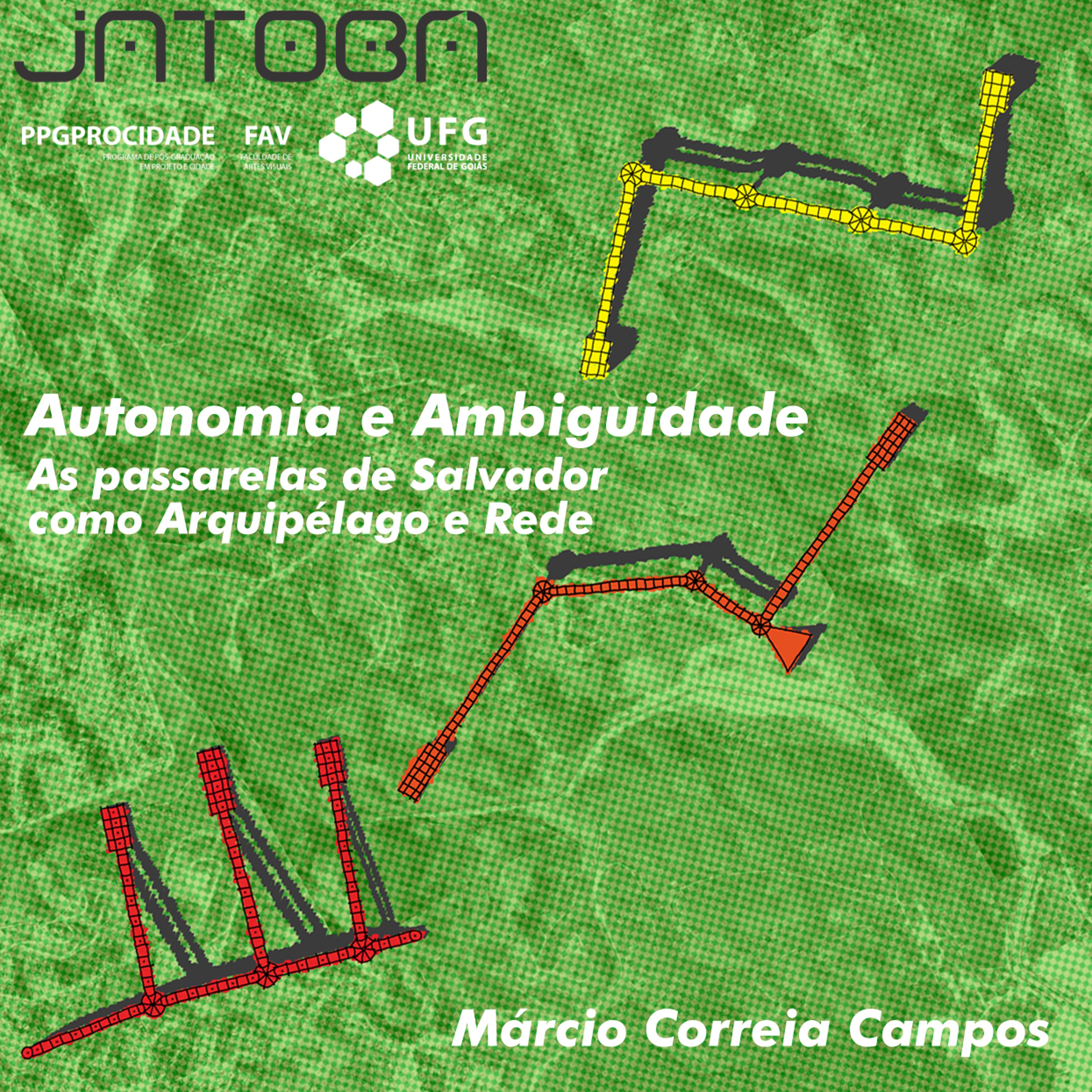Autonomy and Ambiguity
The Footbridges of Salvador as Archipelago and Net
DOI:
https://doi.org/10.5216/revjat.v4.74723Keywords:
Footbridge. Salvador. Lelé. Autonomy. Urbanization.Abstract
The text presents a critical reading of Lelé's work in Salvador based on the writings of Pier Vittorio Aureli and Mark Wigley. The essays shape a theoretical framework that associates the challenge of architecture as an autonomous discipline in the face of violent urbanization processes to the protocols of representation that establish relationships, always lacking neutrality or objective clarity, between architecture and place. From this perspective, an interpretative field is opened that reveals a marked differentiation between the two periods of the architect's work in the city (the first from the mid-1970s to 1982, and the second between 1986 and 1994): In addition to the evident differences between the building material, clearly distinct stances and strategies emerge regarding the relationship with the architecture of the city and its possibility of contemporary expression, revealed through the analysis of the footbridges for the urban tramway system, in opposition to works such as the Lapa Station or the State’s Office buildings in the Bahia Administrative Center, all by Lelé.
Downloads
References
AURELI, Pier Vittorio. The possibility of an absolute architecture. Cambridge, MA: The MIT Press, 2011.
CAMPOS, Márcio Correia. Sistema e adaptação: as passarelas projetadas para Salvador. In LATORRACA, Giancarlo e RISSELADA, Max (org.). A arquitetura de Lelé: fábrica e invenção. São Paulo: Imprensa Oficial do Estado: Museu da Casa Brasileira, 2010. p 72-101.
FRAMPTON, Kenneth. Historia Crítica de la Arquitectura Moderna. Barcelona: Editorial Gustavo Gilli S. A., 1993.
LATORRACA, Giancarlo (org.). João Filgueiras Lima: Lélé. Lisboa: Editora Blau; São Paulo: Instituto Lina Bo e Pietro Maria Bardi, 2000.
LATORRACA, Giancarlo e RISSELADA, Max (org.). A arquitetura de Lelé: fábrica e invenção. São Paulo: Imprensa Oficial do Estado: Museu da Casa Brasileira, 2010.
SAMPAIO, Antônio Heliodório Lima. Formas urbanas: cidade real & cidade ideal contribuição ao estudo urbanístico de Salvador. Salvador: Quarteto Editora / PPG/AU, Faculdade de Arquitetura da UFBa, 1999.
WIGLEY, Mark. Il luogo / On site. Lotus International, Milão, v. 95, p. 118-131, 1997.

Downloads
Published
How to Cite
Issue
Section
License
Copyright (c) 2022 Jatobá Journal

This work is licensed under a Creative Commons Attribution 4.0 International License.
- Autores mantém os direitos autorais e concedem à revista o direito de primeira publicação, com o trabalho simultaneamente licenciado sob a Licença Creative Commons Attribution 4.0 que permite o compartilhamento do trabalho com reconhecimento da autoria e publicação inicial nesta revista.
- Autores têm autorização para assumir contratos adicionais separadamente, para distribuição não-exclusiva da versão do trabalho publicada nesta revista (ex.: publicar em repositório institucional ou como capítulo de livro), com reconhecimento de autoria e publicação inicial nesta revista.
- Autores têm permissão para publicar e distribuir seu trabalho online (ex.: em repositórios institucionais ou na sua página pessoal) após a publicação inicial nesta revista, já que isso pode gerar alterações produtivas, bem como aumentar o impacto e a citação do trabalho publicado (Veja O Efeito do Acesso Livre).
- Foram feitos todos os esforços para identificar e creditar os detentores de direitos sobre as imagens publicadas. Se tem direitos sobre alguma destas imagens e não foi corretamente identificado, por favor, entre em contato com a revista Jatobá e publicaremos a correção num dos próximos números.














